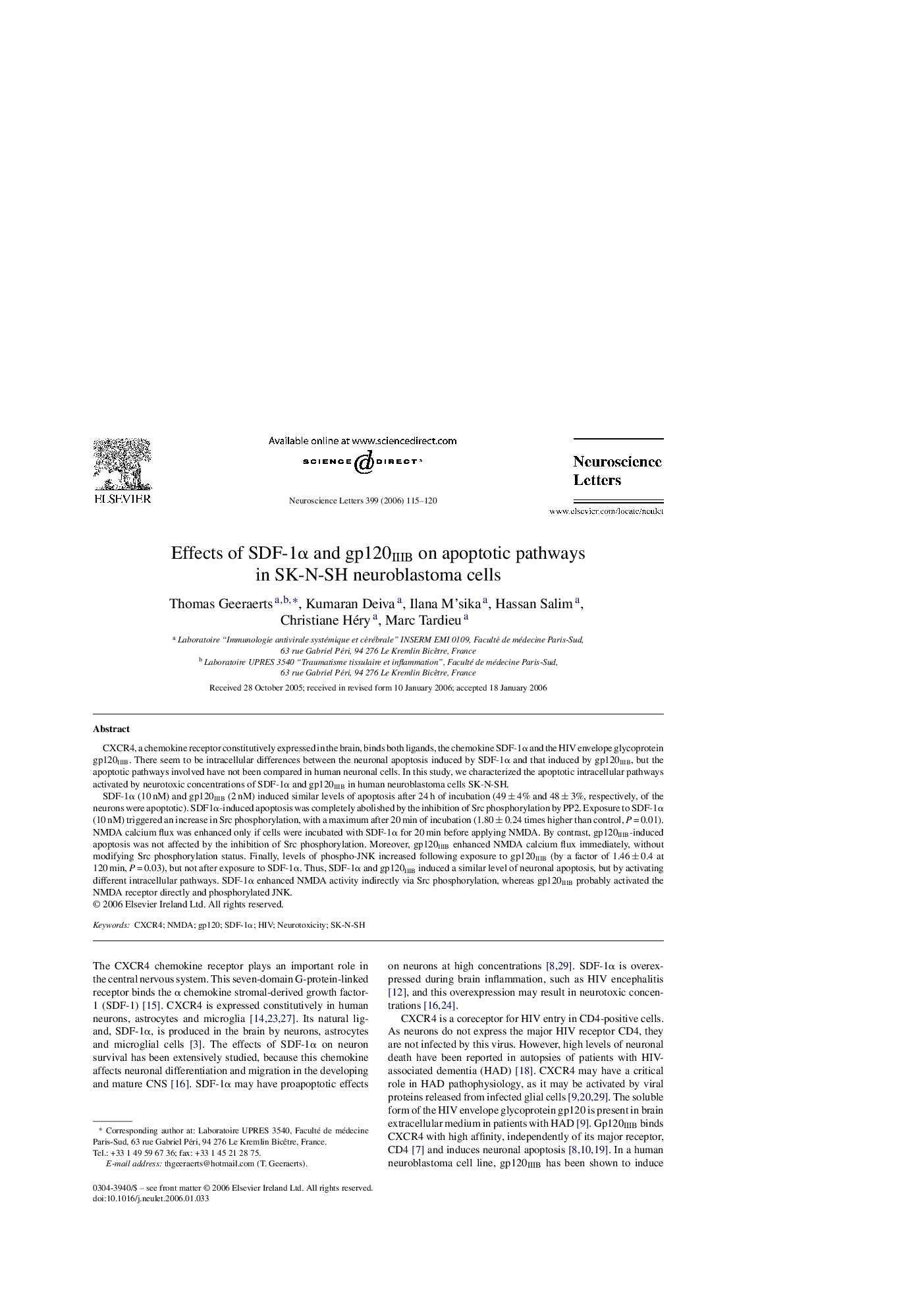| Article ID | Journal | Published Year | Pages | File Type |
|---|---|---|---|---|
| 4350709 | Neuroscience Letters | 2006 | 6 Pages |
Abstract
SDF-1α (10 nM) and gp120IIIB (2 nM) induced similar levels of apoptosis after 24 h of incubation (49 ± 4% and 48 ± 3%, respectively, of the neurons were apoptotic). SDF1α-induced apoptosis was completely abolished by the inhibition of Src phosphorylation by PP2. Exposure to SDF-1α (10 nM) triggered an increase in Src phosphorylation, with a maximum after 20 min of incubation (1.80 ± 0.24 times higher than control, P = 0.01). NMDA calcium flux was enhanced only if cells were incubated with SDF-1α for 20 min before applying NMDA. By contrast, gp120IIIB-induced apoptosis was not affected by the inhibition of Src phosphorylation. Moreover, gp120IIIB enhanced NMDA calcium flux immediately, without modifying Src phosphorylation status. Finally, levels of phospho-JNK increased following exposure to gp120IIIB (by a factor of 1.46 ± 0.4 at 120 min, P = 0.03), but not after exposure to SDF-1α. Thus, SDF-1α and gp120IIIB induced a similar level of neuronal apoptosis, but by activating different intracellular pathways. SDF-1α enhanced NMDA activity indirectly via Src phosphorylation, whereas gp120IIIB probably activated the NMDA receptor directly and phosphorylated JNK.
Related Topics
Life Sciences
Neuroscience
Neuroscience (General)
Authors
Thomas Geeraerts, Kumaran Deiva, Ilana M'sika, Hassan Salim, Christiane Héry, Marc Tardieu,
